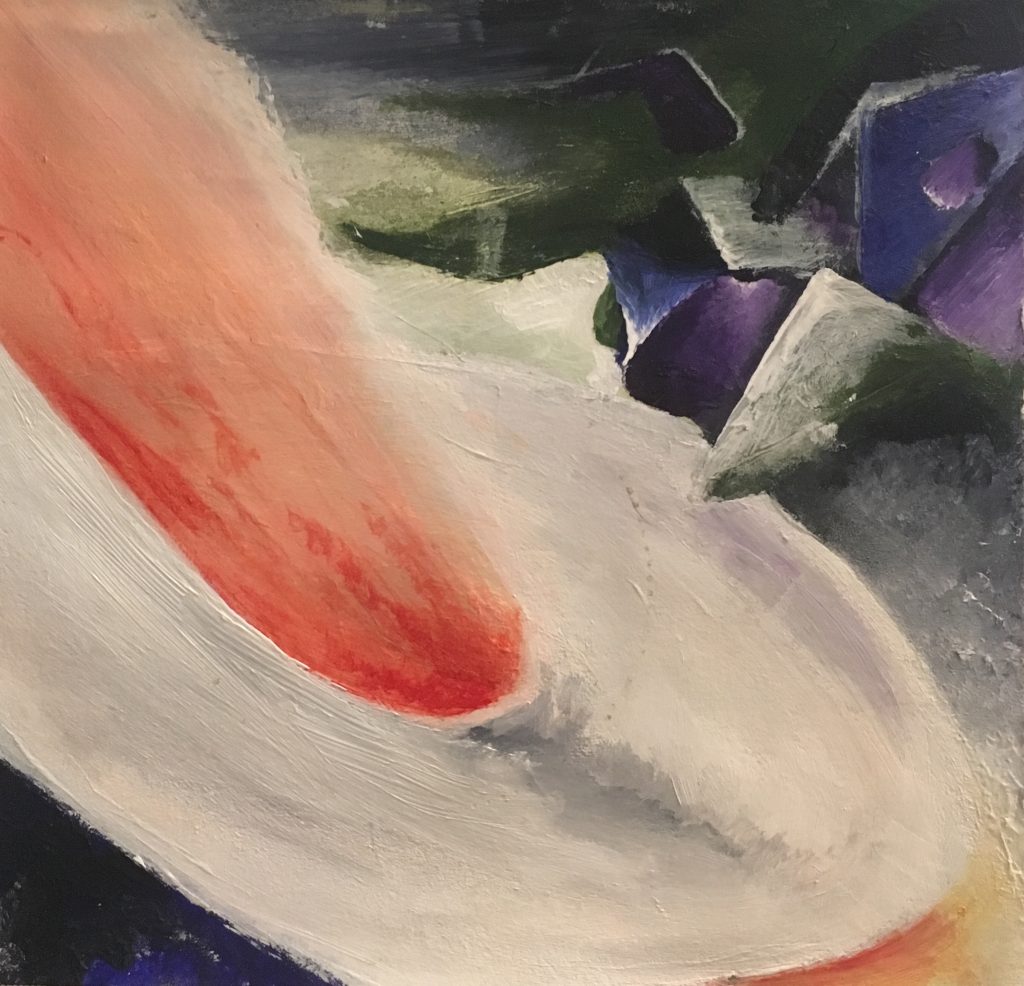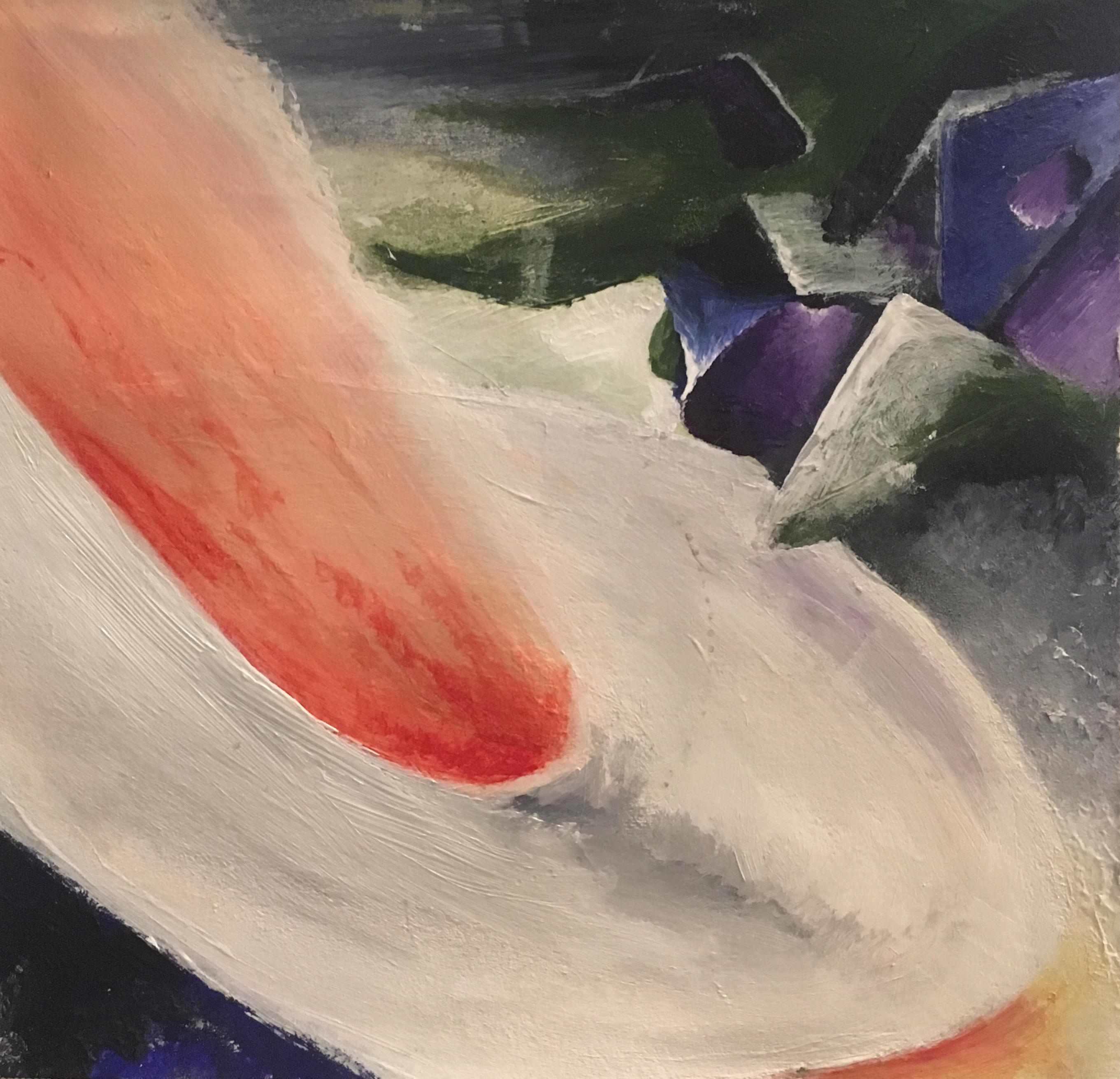
Nothing in life is linear. If a line is the shortest distance between two points, that line is only visible in hindsight. When you’re in the weeds, only able to see five feet in front of you, the path can feel impossibly twisted. Yet arriving atop a hill for a moment of reflection, a backwards glance reveals that it was the straightest path after all. On the eve of releasing my first album, I find myself atop a hill, looking back.
I wrote that introduction to this piece the day before my first album, In Pursuit of Morning came out on Resonant Motion—on March 12th, expecting to finish it the next day with a description of the winding path that led to where I am as an artist today, but that night was the night everything stopped. Broadway closed, shows were cancelled right and left, and now we’re all stuck at home with a little too much time to think. As the world turns inwards, it looks for art for comfort, providing us a moment for reflection on what it means for a song to matter.
Music is sticky. It unwittingly collects fragments of memory, often holding onto things that you’ve long forgotten until a song snaps you back, whether you want it to or not. There are plenty of songs that have this effect on me that would not be apparent from my work. They don’t “matter” as influences on my music, but they matter a hell of a lot to me as a person. Songs like the Band’s “King Harvest”, Arlo Guthrie’s ”Highway In The Wind”, or Chet Baker’s rendition of “Like Someone In Love” are rooms full of boxed memories liable to turn up at the end of any hallway. Right now, in the midst of the chaos of COVID-19, these types of songs have largely eclipsed all others in my listening diet, mattering because of their place as signposts in the archives of my life.
When thinking about music that has directly influenced my voice, it’s very hard to point to a single moment as a turning point. I’ve always been a musical omnivore, taking techniques and ideas from everywhere I could. Pivotal moments for me, like the first time I heard Henry Threadgill’s In For A Penny, In For a Pound, were only pivotal because they provided an answer to the question I was already asking. A long period of experimentation and dissatisfaction alleviated by “you can do that!?” My journey has been less points on a line than it has been a slow gradient, but when comparing two disparate points, the changes in hue are dramatic.
With that caveat, there are some essential rivers in my work that I can trace upstream to their source.
I started out as a trombone player, playing in chamber groups, concert bands and orchestras. In those ensembles, the trombone is very rarely a melody instrument—a quality that I complained about at the time, but allowed me a greater understanding of ensemble writing that I might otherwise have had. The stylistic gauntlet run by my first record is sizable, but all of it emphasizes layers of contrasting events. Simultaneous difference is beautiful, chaos is beautiful, chaos that is in reality simply unfamiliar order is beautiful, and that is a the cornerstone of my musical life.
One tributary that has run under the whole landscape of my musical life is an attachment to narrative. Growing up, my mother sang songs like “I Have No Time” by Bert Jansch and “Geordie” a 17th century ballad adapted by Joan Baez, songs with no refrain but tremendous power in the story they told. “Geordie”—traced back to a broadside printed in the second half of the 1600s—details the trial of a man who (in the version I learned) killed the king’s deer to feed his starving family. It’s sung from the perspective of his wife who pleads with the judge to spare his life, to no avail.
But the judge looked over his left shoulder
He cries, “I'm sorry for thee
Me pretty fair maid you come too late
For he's been condemned already"
While I write primarily instrumental music, this underlying idea that a song should tell you a story, however abstracted that story might become, has never strayed far from my composition. The title track of my album “In Pursuit of Morning” is a perfect example of this. “In Pursuit of Morning” is unique on the album in that it has no improvisation, it has five separate sections, alternating building and relaxing tensions. The title of the song is a turn on a line from a Yehuda HaLevi poem where the poet wishes “let morning pursue me” with the same breeze that blew past the love he pines for. The phrasing stuck in my head, and turning it around lent it a poignant double meaning. The piece deals with the literal and the metaphorical morning, it is as much about struggling for change, or even survival, when trapped in the chaos of these times as it is about a restless sleeper just holding out for first light. This frame grew as the piece did—guiding and being guided by the music.
I firmly believe that the meaning of a piece of music is very individual to the listener, and because of that, describing details of the piece in terms of clear narrative or even emotion is something I’d rather leave to you. That leaves me with the option of describing the music in its component parts which, because it is complex music, can get rather dense. You will be forgiven for skipping to the last paragraph should the prospect of a close reading of the piece dismay rather than intrigue you, but I encourage readers of any background to read on. The following is meant to be read while listening to the piece, and musician or no you might find that you hear things you wouldn’t have otherwise.
The first section of the piece (which lasts from the beginning to the entrance of the cymbal) is a restless stasis. Perhaps it is someone going to bed with a heavy heart, perhaps the status quo—full of beauty yet also pain. The piece arises in situ—it was already occurring in the room you just walked into. There is a moment of resolution, of arrival, in the ascending line dusted with glockenspiel, before the scene changes.
One of two sets of drums enter now, a steady yet still unsettled cymbal attack provides an illusion of a pulse in subtle disagreement with the violin. Other voices join the discussion, united in their disagreement with the first drummer, who begins to pick up steam. The trombone makes an authoritative statement causing an explosion of chatter and the densest part of the piece.
This is action, we give in to restlessness and many different things happen at once. The band is split into two worlds, one dealing with cycles of five and the other cycles of six—the tension this generates propelling the music forward. One drummer plays an ostinato matched in rhythm by the clarinet, the asymmetry of the phrase length adding to the tilt-awhirl chaos. Meanwhile, the bass and trombone shift into high gear with a separate pattern in a smeared unison. The first drummer continues to declaim his argument, the lone voice resisting the rhythmic world of the other instruments—foreshadowing the violin’s entrance after one statement of the theme.
The violin enters with an angular phrase in a contrasting time-world, followed soon by the trumpet, floating above the chaos in the lower instruments. Two more cycles follow and then the whole section shifts its gravitational center—bass, trombone and clarinet move up together, but it is a distorted reflection. The motion itself is smeared across time, and the pitch relationships are stretched in the new space. This coincides with the guitar’s entry in the world of the trumpet and violin before the whole thing collapses in on itself and the ensemble returns to the point made by the violin. One drummer holds on to the five-world briefly before locking into step with the bass and other drummer. They make four joint statements, gaining momentum before plunging back into despair.
The third section languidly drapes a hand over brow to block the electric light, but the respite is short—the slowly simmering fourth section bubbles up with a sense of inevitability, first showcasing the double drums and then synthesizing into a propulsive force behind the distorted guitar line. We reach a cathartic peak and almost escape into the drone of the bass, but that old restless feeling cannot be denied, and scraps of angular language are passed around the band in the fifth and final part. The drums call back to the five world from the opening before dawn, perhaps, shows its face at last.
I like to think of my relationship to a story like calculus—abstracted one level away (rather than describing change, calculus describes how change changes). Rather than tell the story of a man wrongly condemned, I’m interested in the way a piece can make the listener connect their own story. I’m interested in foregrounding the emotional stages a story takes you through while leaving the specifics to be filled in by the reflection of the listener. A piece of music is reflective. Stylistic references, emotional connections, all are dependent on what the listener is already carrying. A work is a hub where the artist and the listener meet across time and space to together make meaning, and in this time of uncertainty and fear, I invite you to meet me at the crossroads that is this album, and to leave some of what you are carrying there.
Matt Forker is a guitarist, composer, and educator based in Brooklyn, NY. His new album, In Pursuit of Morning, is available now on RMI Records. Follow him at www.mattforkermusic.com.

Average Rating